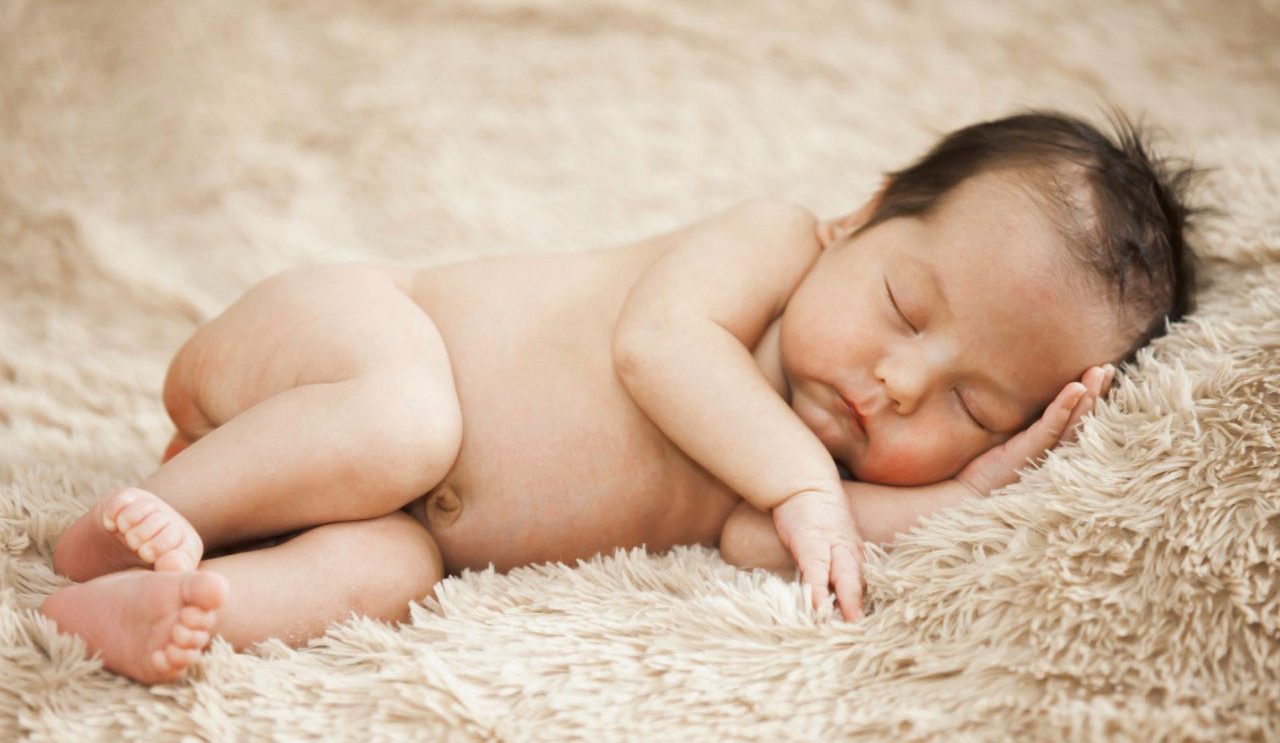6 Ways to Keep Your Newborn Safe When She Sleeps

Unsafe sleeping conditions can lead to suffocation, strangulation, and sudden infant death syndrome.
Putting your newborn to sleep probably feels like a relief — a safe space for the baby and a bit of welcome quiet time for you. But babies in unsafe sleeping conditions are at risk for suffocation, strangulation, and SIDS, or sudden infant death syndrome.
SIDS is a silent, fatal medical disorder that can happen to otherwise healthy infants, usually while they are asleep. It is the leading cause of death for babies between one month and one year of age, though most cases occur before a baby is six months old. Death due to SIDS is not the same as suffocation or strangulation, and SIDS is not directly caused by cribs. However, certain environmental factors can increase the risk of SIDS during sleep.
Of course, you are never going to deliberately put your child to sleep in an unsafe environment. But it can be difficult to know if you’re following the best practices to keep your newborn safe.
Not sure how to create a safe sleep environment for your newborn or feeling a little worried that you’ve missed something important? Start with these six recommendations, and always remember that you can contact your doctor with any safety questions.
YOU MIGHT ALSO LIKE: How to Care for Your Newborn
1. Nothing in the crib
Though stuffed animals, pillows, and baby blankets all look cute, they actually pose dangers for your newborn when it comes time to sleep. Anything in a crib, no matter how soft and cuddly, can cover a baby’s head and increase the risk of suffocation. If you’re worried your baby will be cold at night, use a sleep sack or extra onesie rather than a blanket.
Even bumpers, which are intended to keep babies from knocking their heads, are not worth the risk — there’s no evidence that they prevent injuries in the first place. Your newborn will be safest with nothing extra in the crib.
2. Place infants on their backs to sleep
In the 1990s, the American Academy of Pediatrics began the Back-to-Sleep initiative, which encouraged parents to put their infants to sleep on their backs rather than stomachs. This led to nearly a 50 percent decrease in SIDS deaths. Back sleep is still recommended for newborns.
This doesn’t mean you need to check on your baby constantly — it’s all right if your baby rolls onto his or her stomach during the night. But newborns should always be placed on their backs when they are first put down to sleep.
3. Use a tight fitting mattress and crib sheet
Make sure that your baby’s mattress is designed specifically for that crib model and fits tightly against the rails. Small hands and feet can get stuck in gaps bigger than two fingers, potentially trapping your baby in a dangerous position.
It’s also important to make sure the sheet covering the mattress fits snugly. Loose crib sheets can become wrapped around your baby’s head or neck, increasing the risk of suffocation or strangulation. Keep your newborn safe by using a single fitted sheet sized specifically for a crib mattress.
4. Remove cords and strings
Make sure that your baby’s crib or bassinet is placed away from blind cords, curtain swags, or electronic cords, including baby monitors. These can become wrapped around the baby’s neck or head, increasing the risk of strangulation.
This also includes strings or cords on your baby’s pacifier. Giving your baby a pacifier during nighttime sleep or naps reduces the risk of SIDS, even if it falls out while your baby is sleeping. But pacifiers on cords around a baby’s neck or attached to clothes can be dangerous. If you use a clip attachment to keep track of your newborn’s pacifier during the day, take it off at night.
5. Have plenty of tummy time
Tummy time isn’t really about your newborn’s sleep environment, but it does make sleeping safer for babies. Tummy time, when you place babies on their stomachs during the day, helps strengthen their arm, neck, head, and shoulder muscles. When these muscles are strong, babies are more able to roll over or turn their head, decreasing the risk that they will become stuck in a dangerous position during the night.
6. Share a room with your newborn
Keep your newborn’s crib or bassinet in the same room where you sleep, but not in your bed. This will not only make nighttime feedings quicker and easier but also allow you to monitor and respond to their breathing and movement. Newborns who share a room with their parents are at lower risk for SIDS and other forms of sleep-related death.
Sharing a room doesn’t only keep your baby safer during the night. It also gives you extra peace of mind — something every new parent needs.
Updated:
April 07, 2020
Reviewed By:
Janet O’Dell, RN